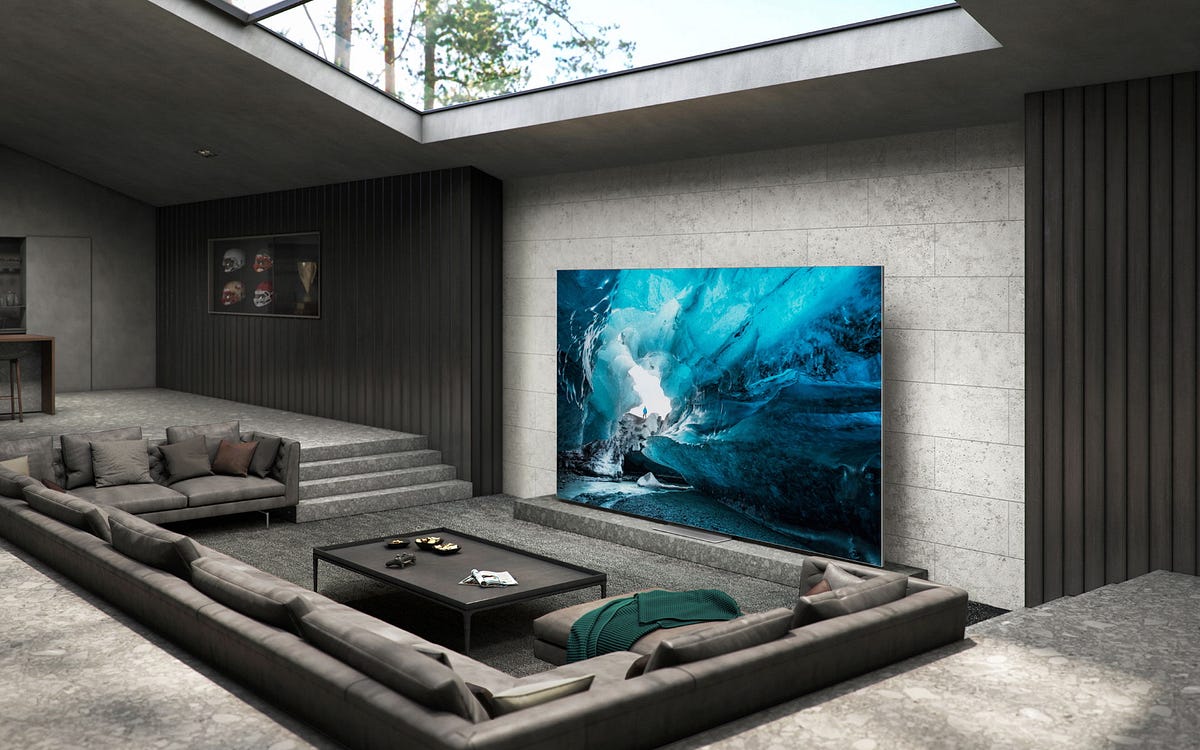CES 2022: Samsung Focuses on Software for its 2022 Smart TVs
New MicroLED and MiniLED product lines, a host of new features and a few surprises… of all kinds
KOSTAS FARKONAS
PublishED: January 6, 2022

CES 2022 does not officially open its doors until January 5th, but many manufacturers have already started making announcements in its context, including Samsung: the Koreans have revealed (most of?) their plans regarding televisions for 2022 and, as it turns out, those include a few surprises that shake things up a bit.
Let’s get the latter out of the way so we can dive into what consumers can actually expect from Samsung during the first half of 2022: the company did not announce its heavily-rumored QD-OLED TVs at CES. It’s an interesting development because (a) Samsung was thought to be on track for releasing those TVs during Q2 of 2022 and (b) because Sony, also heavily rumored to offer QD-OLED TVs this year, now has the chance to claim being first to present models based on this much-promising tech. In the eyes of many, though, QD-OLED TVs remain very much a 2022 thing for Samsung. Maybe the company is not ready to reveal its own models yet or it might prefer to keep people’s attention on its other TVs for now. Yours truly will get back with more information as soon as it becomes available, of course.
What most people will probably be interested in right now regarding Samsung’s 2022 TVs are its MiniLED 8K and 4K lines — and it seems that, for this year, the company chose a different path. It did not go for spectacular improvements in hardware (such as radically increasing the number of MiniLEDs used on each model) but rather for a lot of software-related improvements and new features. It makes sense, in a way: as the excellent Neo QLED QN900A proved, MiniLED tech is more than capable of delivering amazing picture quality already. What Samsung did, is expand on that solid foundation and refine the way it operates.
Return of the MiniLEDs, new functionality for all TVs
So, in order of importance: the 2022 Neo QLED TVs introduce advanced contrast mapping, increasing the brightness level from 12-bit to 14-bit gradation for greater control of the MiniLEDs. This allows for lighting control across 16.384 steps (quadrupled from the previous 4.096 steps). They also offer a new Shape Adaptive Light function, which analyzes the picture in order to better control the shape of light from the MiniLEDs, enhancing the brightness and accuracy of all elements displayed on the screen. This should help with typical LED/LCD problems such as blooming or haloing.

Samsung’s 2022 Neo QLED TVs will also feature a Real Depth Enhancer, a picture quality algorithm that processes objects on the screen against their background to create a sense of depth. They will feature EyeComfort Mode, too: this automatically adjusts the screen’s brightness and tone based on a built-in light sensor and sunset/sunrise information, allowing for a more comfortable viewing experience at night by reducing the blue light which may affect one’s sleep quality. At long last, Samsung’s 2022 Neo QLED TVs will also natively support Dolby Atmos, thanks to the addition of new top channel speakers to their screens.
Apart from the software enhancements related to Neo QLED TVs’ picture and sound, Samsung has added a host of other functions and extras to many of its new smart TVs in general. The company is making significant changes to the user interface of the Tizen operating system, going for a full-screen Smart Hub “that puts content curation and discovery front and center” (like the new Google TV interface does). LG did the same last year with WebOS 6.0 without actually making its TVs any faster or easier to use, frustrating long-time users of its OS — so it will be interesting to see what Samsung chose and managed to do with its own Tizen OS in that regard.

Samsung is also adding a Gaming Hub which offers access to the nVidia GeForce Now, Google Stadia and Utomik game streaming services directly, it’s adding a “Watch Together” function for social viewing through video conferencing, it’s offering Smart Calibration of its TVs through an iPhone or Galaxy smartphone, it’s improving the Game Bar with more options for different types of games and different picture quality levels, it’s even integrating an NFT platform (yes — you read that right) for “discovering, purchasing and trading digital artwork”. That’s a lot of extra TV functionality through software development alone, no?
MicroLED TVs are coming (again) for very few people (again)
Apart from the MiniLED TV series it will be promoting during 2022, Samsung also detailed its new MicroLED TVs — just, well, for people who can actually afford them. These sets are greatly improved this year, offering the same bezel-less Infinity One design the company’s Neo QLED TVs sport, the same MultiView functionality, the same Object Tracking Sound Pro tech as well as Dolby Atmos support. They remain superior to any other display tech widely available, boasting pixel-level control, perfect blacks, 2000 nits of sustained brightness plus 100% coverage of the DCI or Adobe RGB color spaces.

These new MicroLED TVs also come in three pre-configured sizes now: the 110- and 99-inch diagonals already offered since last year plus a new 89-inch one. Larger custom sizes are available for the (very) few customers who can afford them but, since of the three models already mentioned just the new one costs less than six figures, it will be a while before even simply well-off people can consider getting one of those. Mere mortals in need of impressing other people can go for Samsung’s updated Lifestyle TVs, though, such as The Frame and The Serif, which sport a number of improvements and — most importantly — a new matte screen finish that will help them look like paintings and works of art from any angle in a convincing fashion.
All in all a very, very good CES 2022 for Samsung as far as TVs are concerned, then: the Koreans managed to impress with their new models even without showing their hand yet regarding their QD-OLED ones. We know they are coming (they even won a CES 2022 Best of Innovation Award…) but, when asked, Samsung executives enigmatically answer that “they have more to share about the company’s 2022 TV lineup in the next several weeks”. Just the sheer amount of improvements and additions made possible by Samsung’s software development, though, plus the extensive refinement of existing functionality, is enough to get the ball rolling. More information regarding specific models’ release timeframes and prices are still forthcoming, so is a story detailing those. Come… February, maybe?




















